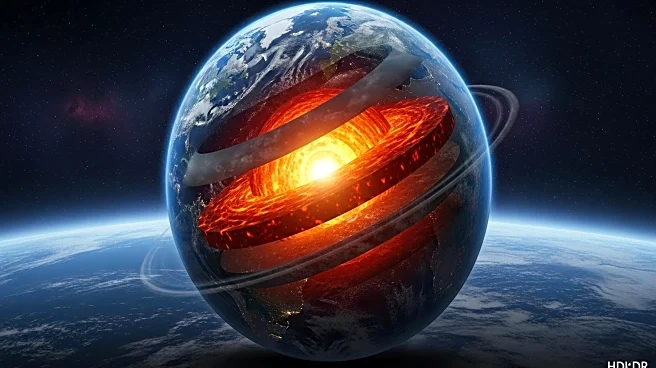What is the story about?
What's Happening?
Scientists from the US and China have discovered that the Earth's core has slowed down and even stopped moving in relation to the Earth's crust. This change, which began in 2009, is part of a cycle where the core's rotation direction relative to the crust changes every 35 years. The core consists of a liquid outer core and a solid inner core, both made of iron and nickel. Despite the reversal, the core does not rotate in the opposite direction but appears to do so due to its slower rotation compared to the crust.
Why It's Important?
The reversal of the Earth's core rotation could have implications for astronomical measurements and satellite operations due to changes in rotational speed, albeit in milliseconds. Potential changes to the Earth's magnetic field and climate are also possible. While humans may not notice these changes, they could affect scientific research and technological systems reliant on precise measurements. Understanding these fluctuations is crucial for predicting long-term geological and environmental impacts.
AI Generated Content
Do you find this article useful?
















